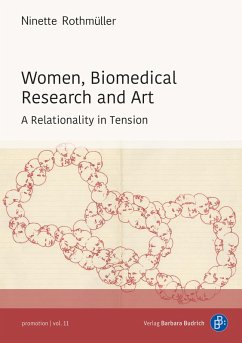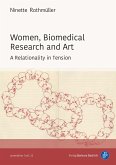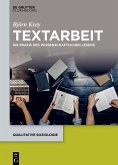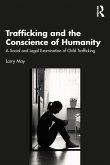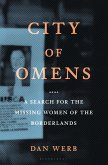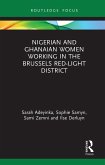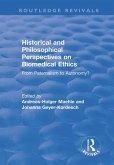36,99 €
Statt 46,00 €**
36,99 €
inkl. MwSt.
**Preis der gedruckten Ausgabe (Broschiertes Buch)
Sofort per Download lieferbar

0 °P sammeln
36,99 €
Statt 46,00 €**
36,99 €
inkl. MwSt.
**Preis der gedruckten Ausgabe (Broschiertes Buch)
Sofort per Download lieferbar
Alle Infos zum eBook verschenken

0 °P sammeln
Als Download kaufen

Statt 46,00 €****
36,99 €
inkl. MwSt.
**Preis der gedruckten Ausgabe (Broschiertes Buch)
Sofort per Download lieferbar

0 °P sammeln
Jetzt verschenken
Alle Infos zum eBook verschenken
Statt 46,00 €****
36,99 €
inkl. MwSt.
**Preis der gedruckten Ausgabe (Broschiertes Buch)
Sofort per Download lieferbar
Alle Infos zum eBook verschenken

0 °P sammeln
- Format: ePub
- Merkliste
- Auf die Merkliste
- Bewerten Bewerten
- Teilen
- Produkt teilen
- Produkterinnerung
- Produkterinnerung

Bitte loggen Sie sich zunächst in Ihr Kundenkonto ein oder registrieren Sie sich bei
bücher.de, um das eBook-Abo tolino select nutzen zu können.
Hier können Sie sich einloggen
Hier können Sie sich einloggen
Sie sind bereits eingeloggt. Klicken Sie auf 2. tolino select Abo, um fortzufahren.

Bitte loggen Sie sich zunächst in Ihr Kundenkonto ein oder registrieren Sie sich bei bücher.de, um das eBook-Abo tolino select nutzen zu können.
Applying a phenomenological lens, this study investigates intersectional vulnerabilities, socio-geographical and racial injustices, as well as the potential of trauma in reproductive medicine, human trafficking and black-market organ trades in a global context. The interdisciplinary study combines notions of writing back from within Pedagogy and hands-on creative social work tools, which emphasize dignity and integrity, and support self-efficacy and human rights in the everyday lives of affected populations.
- Geräte: eReader
- ohne Kopierschutz
- eBook Hilfe
- Größe: 1.85MB
- FamilySharing(5)
Andere Kunden interessierten sich auch für
![Women, Biomedical Research and Art (eBook, PDF) Women, Biomedical Research and Art (eBook, PDF)]() Ninette RothmüllerWomen, Biomedical Research and Art (eBook, PDF)36,99 €
Ninette RothmüllerWomen, Biomedical Research and Art (eBook, PDF)36,99 €![Textarbeit (eBook, ePUB) Textarbeit (eBook, ePUB)]() Björn KreyTextarbeit (eBook, ePUB)44,95 €
Björn KreyTextarbeit (eBook, ePUB)44,95 €![Unbroken Chains (eBook, ePUB) Unbroken Chains (eBook, ePUB)]() Melissa DitmoreUnbroken Chains (eBook, ePUB)10,95 €
Melissa DitmoreUnbroken Chains (eBook, ePUB)10,95 €![Trafficking and the Conscience of Humanity (eBook, ePUB) Trafficking and the Conscience of Humanity (eBook, ePUB)]() Larry MayTrafficking and the Conscience of Humanity (eBook, ePUB)41,95 €
Larry MayTrafficking and the Conscience of Humanity (eBook, ePUB)41,95 €![City of Omens (eBook, ePUB) City of Omens (eBook, ePUB)]() Dan WerbCity of Omens (eBook, ePUB)13,95 €
Dan WerbCity of Omens (eBook, ePUB)13,95 €![Nigerian and Ghanaian Women Working in the Brussels Red-Light District (eBook, ePUB) Nigerian and Ghanaian Women Working in the Brussels Red-Light District (eBook, ePUB)]() Sarah AdeyinkaNigerian and Ghanaian Women Working in the Brussels Red-Light District (eBook, ePUB)21,95 €
Sarah AdeyinkaNigerian and Ghanaian Women Working in the Brussels Red-Light District (eBook, ePUB)21,95 €![Historical and Philosophical Perspectives on Biomedical Ethics: From Paternalism to Autonomy? (eBook, ePUB) Historical and Philosophical Perspectives on Biomedical Ethics: From Paternalism to Autonomy? (eBook, ePUB)]() Andreas-Holger MaehleHistorical and Philosophical Perspectives on Biomedical Ethics: From Paternalism to Autonomy? (eBook, ePUB)55,95 €
Andreas-Holger MaehleHistorical and Philosophical Perspectives on Biomedical Ethics: From Paternalism to Autonomy? (eBook, ePUB)55,95 €-
-
-
Applying a phenomenological lens, this study investigates intersectional vulnerabilities, socio-geographical and racial injustices, as well as the potential of trauma in reproductive medicine, human trafficking and black-market organ trades in a global context. The interdisciplinary study combines notions of writing back from within Pedagogy and hands-on creative social work tools, which emphasize dignity and integrity, and support self-efficacy and human rights in the everyday lives of affected populations.
Dieser Download kann aus rechtlichen Gründen nur mit Rechnungsadresse in A, B, BG, CY, CZ, D, DK, EW, E, FIN, F, GR, H, IRL, I, LT, L, LR, M, NL, PL, P, R, S, SLO, SK ausgeliefert werden.
Produktdetails
- Produktdetails
- Verlag: Verlag Barbara Budrich
- Seitenzahl: 369
- Erscheinungstermin: 14. Juni 2021
- Englisch
- ISBN-13: 9783847417477
- Artikelnr.: 62234830
- Verlag: Verlag Barbara Budrich
- Seitenzahl: 369
- Erscheinungstermin: 14. Juni 2021
- Englisch
- ISBN-13: 9783847417477
- Artikelnr.: 62234830
- Herstellerkennzeichnung Die Herstellerinformationen sind derzeit nicht verfügbar.
Ninette Rothmüller is a visiting research scholar, Ph.D. Program in Sociology at the Graduate Center at the City University of New York (CUNY).
Table of Content
1. Prologue
1.1 Introduction
1.1.1 Research Leading to this Study
1.1.2 Embedding my Research in Pedagogy
1.1.3 Content of Chapters
2. On the Matrix of this Study OR How to Soar
2.1 On the Interest in Messiness and Inclusion
2.2 Body/Körper and Leib - an Attempt to Define Relationality through Translation,
Time and Meaning
2.2.1 An Introduction to Spaces of Public Reflections: On Erasing and Connecting
'Semi-real' Bodies
2.2.2 On the Interface of Body/Körper and Leib - the Significance of Translations and
Relationality between Experience and Language
2.2.3 Body/Körper and Leib - Historical Connections - Philosophical and Religious
Framings
2.2.4 On the Interface of Body, Leib and Körper - Phenomenology and Post-structural
Thoughts
2.3 Body/Körper and Leib - Theory and its Application
2.3.1 On the Entwinement of Body/Körper and Leib
2.4 Leib Confrontations
3. The Methodological Conceptualization of the Project
3.1 The Pre-study
3.2 The multi-sited characteristics of this study
3.2.1 Germany and the UK as geographical, political, legal, social and cultural research
sites
3.2.2 Sites of Technological Intersections
3.2.3 Sites of Transdisciplinarity
3.3 Fieldwork
3.3.1 Feminist Ways of Knowing
3.3.2 Locating Visuals in the Field and Social Science Research
3.3.3 Carrying out Conversations
3.3.3.1 On Expert and Expertise
3.3.3.2 Locating and 'Choosing' Conversation Partners
3.3.3.2.1 On the Relationship to Theoretical Sampling
3.3.3.2.2 On the Relationship to Snowball Sampling
3.3.4 On the Shift of Talking of Conversations instead of Interviews and on the Role of
Both Conversation Partners
3.3.5 Incorporating Texts in Fieldwork
3.4 Analysis/Writing
3.4.1 Transcription and Authorization
3.4.2 On the Use of Language as an Analytical Tool
3.4.3 Art as a Tool to Research - 'Of Women'
4. Fragmentations
4.1 Entities in a Chapter about Fragmentation
4.2 Constructing potential Things in Time and Space
4.2.1 Telling the Story - Presenting the Pictures. On Trying to Grasp what is at Stake
4.2.2 Telling the Story - Sensing Women. Contributions to Confusion
4.2.3 Presenting the Picture - Sensing the Female Body. Contributions in Search of
Matter(s)
4.2.4 Preparing the Stage - On Spaces of Separation and Hierarchies
4.2.5 Seeking Company - Speaking, Writing, Seeing
4.3 Bodies at Stake - Visualized, Seduced, taken Apart, but Alive?
4.3.1 Bodies Inside out - Dwelled Space Seduced
4.3.2 The Heartbeat of a Machine and I
4.3.3 On the Organic Colonization of Scotland and England by a Pregnant Woman
4.4 Final Thoughts
5. Body Geographics. Territories, Trades and Mappings in Inequality
5.1 Body Territories under Re-construction - an Introduction
5.1.1 Body Territories under Re-construction - Voices
5.1.2 Body Territories under Re-construction - Actors and Activities
5.1.3 Bodily Substance Transfer and Hierarchies in Organ Transplantations or When
are we dead?
5.1.4 Mapping Sites in Action - On the Creation of Powerful Stories, Marketable
Events and Images
5.1.5 Art and the Skinned and Scanned Human
5.2. Traffics in the Body - Historical Remarks on Substantial Trade Relations
6. Gendered Harvest
6.1 Cells at Stake - Ethical and Legal Approaches
6. 2 Human Recycling - Terms and Conditions
6.2.1 Bodies and Borders - Voices
6.2.2 Body Exchange and Leib Rejection
6.3. Gendered 'Donations'
6.3.1 Rearranging Borders - Organs and Tissue Travel from East to West and from
Bottom to Top
6.3.2 Harvesting the Body during the Gold Rush
6.3.3 Gifts and Commodities - writing Values onto Bodies
6.3.4 Celebrating Christmas during Birth OR How to be a 'Good Citizen'
7. PaAcknowledgments
1 Prologue
1.1 Introduction
1.1.1 Research Leading to this Study
1.1.2 Embedding the Research in Pedagogy
1.1.3 Content of Chapters
2 On the Matrix of this Study OR How to Soar
2.1 On the Interest in Messiness and Inclusion
2.2 Body/Körper and Leib - an Attempt to Define Relationality
through Translation, Time, and Meaning
2.2.1 An Introduction to Spaces of Public Reflections:
On Erasing and Connecting "Semi-real" Bodies
2.2.2 On the Interface of Body/Körper and Leib -
the Significance of Translations and Relationality
between Experience and Language
2.3 Body/Körper and Leib - Historical Connections -
Philosophical and Religious Framings
2.3.1 On the Interface of Body, Leib and Körper -
Phenomenology and Post- structural Thoughts
2.4 Body/Körper and Leib - Theory and its Application
2.4.1 On the Entwinement of Body/Körper and Leib
2.5 Leib Confrontations
3 The Methodological Conceptualization of the Project
3.1 The Pre-study
3.2 The Multi-Sited Characteristics of this Study
3.2.1 Germany and the UK as Geographical, Political,
Legal, Social, and Cultural Research Sites
3.2.2 Sites of Technological Intersections
3.2.3 Sites of Transdisciplinarity
3.3 Fieldwork
3.3.1 Feminist Ways of Knowing
3.3.2 Locating Visuals in the Field and Social Science
Research
3.3.3 Carrying out Conversations
3.3.4 On the Shift to Talking of Conversations instead of
Interviews and on the Role of Both Conversation
Partners
3.3.5 Incorporating Texts in Fieldwork
3.4 Analysis/Writing
3.4.1 Transcription and Authorization
3.4.2 On the Use of Language as an Analytical Tool
3.4.3 Art as a Tool to Research - Of Women
4 Fragmentations
4.1 Entities in a Chapter about Fragmentation
4.2 Constructing Potential Things in Time and Space
4.2.1 Telling the Story - Presenting the Pictures. On Trying
to Grasp what is at Stake
4.2.2 Telling the Story - Sensing Women. Contributions
to Confusion
4.2.3 Presenting the Picture - Sensing the Female Body.
Contribution in Search of Matter(s)
4.2.4 Preparing the Stage - On Spaces of Separation and
Hierarchies
4.2.5 Seeking Company - Speaking, Writing, Seeing
4.3 Bodies at Stake - Visualized, Seduced, Taken Apart,
but Alive?
4.3.1 Bodies Inside out - Dwelled Space Seduced
4.3.2 The Heartbeat of a Machine and I
4.3.3 On the Organic Colonization of Scotland and England
by a Pregnant Woman
4.4 Final Thoughts
5 Body Geographics. Territories, Trades, and Mappings
in Inequality
5.1 Body Territories Under Re-construction - an Introduction
5.1.1 Body Territories Under Re-construction - Voices
5.1.2 Body Territories Under Re-construction -
Actors and Activities
5.1.3 Bodily Substance Transfer and Hierarchies in Organ
Transplantations or, When Are We Dead?
5.1.4 Mapping Sites in Action - On the Creation of
Powerful Stories, Marketable Events, and Images
5.1.5 Art and the Skinned and Scanned Human
5.2 Traffics in the Body - Historical Remarks on Substantial
Trade Relations
6 Gendered Harvest
6.1 Cells at Stake - Ethical and Legal Approaches
6.2 Human Recycling - Terms and Conditions
6.2.1 Bodies and Borders - Voices
6.2.2 Body Exchange and Leib Rejection
6.3 Gendered "Donations"
6.3.1 Rearranging Borders - Organs and Tissue Travel
from East to West and from Bottom to Top
6.3.2 Harvesting the Body during the Gold Rush
6.3.3 Gifts and Commodities - Writing Values
onto Bodies
6.3.4 Celebrating Christmas during Birth OR How to Be
a "Good Citizen"
7 Participatory Art and Public Engagement
7.1 To Create
7.1.1 To Create Here and Now, There and Then
7.1.2 Space, Place, Site, Location - Theore
1. Prologue
1.1 Introduction
1.1.1 Research Leading to this Study
1.1.2 Embedding my Research in Pedagogy
1.1.3 Content of Chapters
2. On the Matrix of this Study OR How to Soar
2.1 On the Interest in Messiness and Inclusion
2.2 Body/Körper and Leib - an Attempt to Define Relationality through Translation,
Time and Meaning
2.2.1 An Introduction to Spaces of Public Reflections: On Erasing and Connecting
'Semi-real' Bodies
2.2.2 On the Interface of Body/Körper and Leib - the Significance of Translations and
Relationality between Experience and Language
2.2.3 Body/Körper and Leib - Historical Connections - Philosophical and Religious
Framings
2.2.4 On the Interface of Body, Leib and Körper - Phenomenology and Post-structural
Thoughts
2.3 Body/Körper and Leib - Theory and its Application
2.3.1 On the Entwinement of Body/Körper and Leib
2.4 Leib Confrontations
3. The Methodological Conceptualization of the Project
3.1 The Pre-study
3.2 The multi-sited characteristics of this study
3.2.1 Germany and the UK as geographical, political, legal, social and cultural research
sites
3.2.2 Sites of Technological Intersections
3.2.3 Sites of Transdisciplinarity
3.3 Fieldwork
3.3.1 Feminist Ways of Knowing
3.3.2 Locating Visuals in the Field and Social Science Research
3.3.3 Carrying out Conversations
3.3.3.1 On Expert and Expertise
3.3.3.2 Locating and 'Choosing' Conversation Partners
3.3.3.2.1 On the Relationship to Theoretical Sampling
3.3.3.2.2 On the Relationship to Snowball Sampling
3.3.4 On the Shift of Talking of Conversations instead of Interviews and on the Role of
Both Conversation Partners
3.3.5 Incorporating Texts in Fieldwork
3.4 Analysis/Writing
3.4.1 Transcription and Authorization
3.4.2 On the Use of Language as an Analytical Tool
3.4.3 Art as a Tool to Research - 'Of Women'
4. Fragmentations
4.1 Entities in a Chapter about Fragmentation
4.2 Constructing potential Things in Time and Space
4.2.1 Telling the Story - Presenting the Pictures. On Trying to Grasp what is at Stake
4.2.2 Telling the Story - Sensing Women. Contributions to Confusion
4.2.3 Presenting the Picture - Sensing the Female Body. Contributions in Search of
Matter(s)
4.2.4 Preparing the Stage - On Spaces of Separation and Hierarchies
4.2.5 Seeking Company - Speaking, Writing, Seeing
4.3 Bodies at Stake - Visualized, Seduced, taken Apart, but Alive?
4.3.1 Bodies Inside out - Dwelled Space Seduced
4.3.2 The Heartbeat of a Machine and I
4.3.3 On the Organic Colonization of Scotland and England by a Pregnant Woman
4.4 Final Thoughts
5. Body Geographics. Territories, Trades and Mappings in Inequality
5.1 Body Territories under Re-construction - an Introduction
5.1.1 Body Territories under Re-construction - Voices
5.1.2 Body Territories under Re-construction - Actors and Activities
5.1.3 Bodily Substance Transfer and Hierarchies in Organ Transplantations or When
are we dead?
5.1.4 Mapping Sites in Action - On the Creation of Powerful Stories, Marketable
Events and Images
5.1.5 Art and the Skinned and Scanned Human
5.2. Traffics in the Body - Historical Remarks on Substantial Trade Relations
6. Gendered Harvest
6.1 Cells at Stake - Ethical and Legal Approaches
6. 2 Human Recycling - Terms and Conditions
6.2.1 Bodies and Borders - Voices
6.2.2 Body Exchange and Leib Rejection
6.3. Gendered 'Donations'
6.3.1 Rearranging Borders - Organs and Tissue Travel from East to West and from
Bottom to Top
6.3.2 Harvesting the Body during the Gold Rush
6.3.3 Gifts and Commodities - writing Values onto Bodies
6.3.4 Celebrating Christmas during Birth OR How to be a 'Good Citizen'
7. PaAcknowledgments
1 Prologue
1.1 Introduction
1.1.1 Research Leading to this Study
1.1.2 Embedding the Research in Pedagogy
1.1.3 Content of Chapters
2 On the Matrix of this Study OR How to Soar
2.1 On the Interest in Messiness and Inclusion
2.2 Body/Körper and Leib - an Attempt to Define Relationality
through Translation, Time, and Meaning
2.2.1 An Introduction to Spaces of Public Reflections:
On Erasing and Connecting "Semi-real" Bodies
2.2.2 On the Interface of Body/Körper and Leib -
the Significance of Translations and Relationality
between Experience and Language
2.3 Body/Körper and Leib - Historical Connections -
Philosophical and Religious Framings
2.3.1 On the Interface of Body, Leib and Körper -
Phenomenology and Post- structural Thoughts
2.4 Body/Körper and Leib - Theory and its Application
2.4.1 On the Entwinement of Body/Körper and Leib
2.5 Leib Confrontations
3 The Methodological Conceptualization of the Project
3.1 The Pre-study
3.2 The Multi-Sited Characteristics of this Study
3.2.1 Germany and the UK as Geographical, Political,
Legal, Social, and Cultural Research Sites
3.2.2 Sites of Technological Intersections
3.2.3 Sites of Transdisciplinarity
3.3 Fieldwork
3.3.1 Feminist Ways of Knowing
3.3.2 Locating Visuals in the Field and Social Science
Research
3.3.3 Carrying out Conversations
3.3.4 On the Shift to Talking of Conversations instead of
Interviews and on the Role of Both Conversation
Partners
3.3.5 Incorporating Texts in Fieldwork
3.4 Analysis/Writing
3.4.1 Transcription and Authorization
3.4.2 On the Use of Language as an Analytical Tool
3.4.3 Art as a Tool to Research - Of Women
4 Fragmentations
4.1 Entities in a Chapter about Fragmentation
4.2 Constructing Potential Things in Time and Space
4.2.1 Telling the Story - Presenting the Pictures. On Trying
to Grasp what is at Stake
4.2.2 Telling the Story - Sensing Women. Contributions
to Confusion
4.2.3 Presenting the Picture - Sensing the Female Body.
Contribution in Search of Matter(s)
4.2.4 Preparing the Stage - On Spaces of Separation and
Hierarchies
4.2.5 Seeking Company - Speaking, Writing, Seeing
4.3 Bodies at Stake - Visualized, Seduced, Taken Apart,
but Alive?
4.3.1 Bodies Inside out - Dwelled Space Seduced
4.3.2 The Heartbeat of a Machine and I
4.3.3 On the Organic Colonization of Scotland and England
by a Pregnant Woman
4.4 Final Thoughts
5 Body Geographics. Territories, Trades, and Mappings
in Inequality
5.1 Body Territories Under Re-construction - an Introduction
5.1.1 Body Territories Under Re-construction - Voices
5.1.2 Body Territories Under Re-construction -
Actors and Activities
5.1.3 Bodily Substance Transfer and Hierarchies in Organ
Transplantations or, When Are We Dead?
5.1.4 Mapping Sites in Action - On the Creation of
Powerful Stories, Marketable Events, and Images
5.1.5 Art and the Skinned and Scanned Human
5.2 Traffics in the Body - Historical Remarks on Substantial
Trade Relations
6 Gendered Harvest
6.1 Cells at Stake - Ethical and Legal Approaches
6.2 Human Recycling - Terms and Conditions
6.2.1 Bodies and Borders - Voices
6.2.2 Body Exchange and Leib Rejection
6.3 Gendered "Donations"
6.3.1 Rearranging Borders - Organs and Tissue Travel
from East to West and from Bottom to Top
6.3.2 Harvesting the Body during the Gold Rush
6.3.3 Gifts and Commodities - Writing Values
onto Bodies
6.3.4 Celebrating Christmas during Birth OR How to Be
a "Good Citizen"
7 Participatory Art and Public Engagement
7.1 To Create
7.1.1 To Create Here and Now, There and Then
7.1.2 Space, Place, Site, Location - Theore
Table of Content
1. Prologue
1.1 Introduction
1.1.1 Research Leading to this Study
1.1.2 Embedding my Research in Pedagogy
1.1.3 Content of Chapters
2. On the Matrix of this Study OR How to Soar
2.1 On the Interest in Messiness and Inclusion
2.2 Body/Körper and Leib - an Attempt to Define Relationality through Translation,
Time and Meaning
2.2.1 An Introduction to Spaces of Public Reflections: On Erasing and Connecting
'Semi-real' Bodies
2.2.2 On the Interface of Body/Körper and Leib - the Significance of Translations and
Relationality between Experience and Language
2.2.3 Body/Körper and Leib - Historical Connections - Philosophical and Religious
Framings
2.2.4 On the Interface of Body, Leib and Körper - Phenomenology and Post-structural
Thoughts
2.3 Body/Körper and Leib - Theory and its Application
2.3.1 On the Entwinement of Body/Körper and Leib
2.4 Leib Confrontations
3. The Methodological Conceptualization of the Project
3.1 The Pre-study
3.2 The multi-sited characteristics of this study
3.2.1 Germany and the UK as geographical, political, legal, social and cultural research
sites
3.2.2 Sites of Technological Intersections
3.2.3 Sites of Transdisciplinarity
3.3 Fieldwork
3.3.1 Feminist Ways of Knowing
3.3.2 Locating Visuals in the Field and Social Science Research
3.3.3 Carrying out Conversations
3.3.3.1 On Expert and Expertise
3.3.3.2 Locating and 'Choosing' Conversation Partners
3.3.3.2.1 On the Relationship to Theoretical Sampling
3.3.3.2.2 On the Relationship to Snowball Sampling
3.3.4 On the Shift of Talking of Conversations instead of Interviews and on the Role of
Both Conversation Partners
3.3.5 Incorporating Texts in Fieldwork
3.4 Analysis/Writing
3.4.1 Transcription and Authorization
3.4.2 On the Use of Language as an Analytical Tool
3.4.3 Art as a Tool to Research - 'Of Women'
4. Fragmentations
4.1 Entities in a Chapter about Fragmentation
4.2 Constructing potential Things in Time and Space
4.2.1 Telling the Story - Presenting the Pictures. On Trying to Grasp what is at Stake
4.2.2 Telling the Story - Sensing Women. Contributions to Confusion
4.2.3 Presenting the Picture - Sensing the Female Body. Contributions in Search of
Matter(s)
4.2.4 Preparing the Stage - On Spaces of Separation and Hierarchies
4.2.5 Seeking Company - Speaking, Writing, Seeing
4.3 Bodies at Stake - Visualized, Seduced, taken Apart, but Alive?
4.3.1 Bodies Inside out - Dwelled Space Seduced
4.3.2 The Heartbeat of a Machine and I
4.3.3 On the Organic Colonization of Scotland and England by a Pregnant Woman
4.4 Final Thoughts
5. Body Geographics. Territories, Trades and Mappings in Inequality
5.1 Body Territories under Re-construction - an Introduction
5.1.1 Body Territories under Re-construction - Voices
5.1.2 Body Territories under Re-construction - Actors and Activities
5.1.3 Bodily Substance Transfer and Hierarchies in Organ Transplantations or When
are we dead?
5.1.4 Mapping Sites in Action - On the Creation of Powerful Stories, Marketable
Events and Images
5.1.5 Art and the Skinned and Scanned Human
5.2. Traffics in the Body - Historical Remarks on Substantial Trade Relations
6. Gendered Harvest
6.1 Cells at Stake - Ethical and Legal Approaches
6. 2 Human Recycling - Terms and Conditions
6.2.1 Bodies and Borders - Voices
6.2.2 Body Exchange and Leib Rejection
6.3. Gendered 'Donations'
6.3.1 Rearranging Borders - Organs and Tissue Travel from East to West and from
Bottom to Top
6.3.2 Harvesting the Body during the Gold Rush
6.3.3 Gifts and Commodities - writing Values onto Bodies
6.3.4 Celebrating Christmas during Birth OR How to be a 'Good Citizen'
7. PaAcknowledgments
1 Prologue
1.1 Introduction
1.1.1 Research Leading to this Study
1.1.2 Embedding the Research in Pedagogy
1.1.3 Content of Chapters
2 On the Matrix of this Study OR How to Soar
2.1 On the Interest in Messiness and Inclusion
2.2 Body/Körper and Leib - an Attempt to Define Relationality
through Translation, Time, and Meaning
2.2.1 An Introduction to Spaces of Public Reflections:
On Erasing and Connecting "Semi-real" Bodies
2.2.2 On the Interface of Body/Körper and Leib -
the Significance of Translations and Relationality
between Experience and Language
2.3 Body/Körper and Leib - Historical Connections -
Philosophical and Religious Framings
2.3.1 On the Interface of Body, Leib and Körper -
Phenomenology and Post- structural Thoughts
2.4 Body/Körper and Leib - Theory and its Application
2.4.1 On the Entwinement of Body/Körper and Leib
2.5 Leib Confrontations
3 The Methodological Conceptualization of the Project
3.1 The Pre-study
3.2 The Multi-Sited Characteristics of this Study
3.2.1 Germany and the UK as Geographical, Political,
Legal, Social, and Cultural Research Sites
3.2.2 Sites of Technological Intersections
3.2.3 Sites of Transdisciplinarity
3.3 Fieldwork
3.3.1 Feminist Ways of Knowing
3.3.2 Locating Visuals in the Field and Social Science
Research
3.3.3 Carrying out Conversations
3.3.4 On the Shift to Talking of Conversations instead of
Interviews and on the Role of Both Conversation
Partners
3.3.5 Incorporating Texts in Fieldwork
3.4 Analysis/Writing
3.4.1 Transcription and Authorization
3.4.2 On the Use of Language as an Analytical Tool
3.4.3 Art as a Tool to Research - Of Women
4 Fragmentations
4.1 Entities in a Chapter about Fragmentation
4.2 Constructing Potential Things in Time and Space
4.2.1 Telling the Story - Presenting the Pictures. On Trying
to Grasp what is at Stake
4.2.2 Telling the Story - Sensing Women. Contributions
to Confusion
4.2.3 Presenting the Picture - Sensing the Female Body.
Contribution in Search of Matter(s)
4.2.4 Preparing the Stage - On Spaces of Separation and
Hierarchies
4.2.5 Seeking Company - Speaking, Writing, Seeing
4.3 Bodies at Stake - Visualized, Seduced, Taken Apart,
but Alive?
4.3.1 Bodies Inside out - Dwelled Space Seduced
4.3.2 The Heartbeat of a Machine and I
4.3.3 On the Organic Colonization of Scotland and England
by a Pregnant Woman
4.4 Final Thoughts
5 Body Geographics. Territories, Trades, and Mappings
in Inequality
5.1 Body Territories Under Re-construction - an Introduction
5.1.1 Body Territories Under Re-construction - Voices
5.1.2 Body Territories Under Re-construction -
Actors and Activities
5.1.3 Bodily Substance Transfer and Hierarchies in Organ
Transplantations or, When Are We Dead?
5.1.4 Mapping Sites in Action - On the Creation of
Powerful Stories, Marketable Events, and Images
5.1.5 Art and the Skinned and Scanned Human
5.2 Traffics in the Body - Historical Remarks on Substantial
Trade Relations
6 Gendered Harvest
6.1 Cells at Stake - Ethical and Legal Approaches
6.2 Human Recycling - Terms and Conditions
6.2.1 Bodies and Borders - Voices
6.2.2 Body Exchange and Leib Rejection
6.3 Gendered "Donations"
6.3.1 Rearranging Borders - Organs and Tissue Travel
from East to West and from Bottom to Top
6.3.2 Harvesting the Body during the Gold Rush
6.3.3 Gifts and Commodities - Writing Values
onto Bodies
6.3.4 Celebrating Christmas during Birth OR How to Be
a "Good Citizen"
7 Participatory Art and Public Engagement
7.1 To Create
7.1.1 To Create Here and Now, There and Then
7.1.2 Space, Place, Site, Location - Theore
1. Prologue
1.1 Introduction
1.1.1 Research Leading to this Study
1.1.2 Embedding my Research in Pedagogy
1.1.3 Content of Chapters
2. On the Matrix of this Study OR How to Soar
2.1 On the Interest in Messiness and Inclusion
2.2 Body/Körper and Leib - an Attempt to Define Relationality through Translation,
Time and Meaning
2.2.1 An Introduction to Spaces of Public Reflections: On Erasing and Connecting
'Semi-real' Bodies
2.2.2 On the Interface of Body/Körper and Leib - the Significance of Translations and
Relationality between Experience and Language
2.2.3 Body/Körper and Leib - Historical Connections - Philosophical and Religious
Framings
2.2.4 On the Interface of Body, Leib and Körper - Phenomenology and Post-structural
Thoughts
2.3 Body/Körper and Leib - Theory and its Application
2.3.1 On the Entwinement of Body/Körper and Leib
2.4 Leib Confrontations
3. The Methodological Conceptualization of the Project
3.1 The Pre-study
3.2 The multi-sited characteristics of this study
3.2.1 Germany and the UK as geographical, political, legal, social and cultural research
sites
3.2.2 Sites of Technological Intersections
3.2.3 Sites of Transdisciplinarity
3.3 Fieldwork
3.3.1 Feminist Ways of Knowing
3.3.2 Locating Visuals in the Field and Social Science Research
3.3.3 Carrying out Conversations
3.3.3.1 On Expert and Expertise
3.3.3.2 Locating and 'Choosing' Conversation Partners
3.3.3.2.1 On the Relationship to Theoretical Sampling
3.3.3.2.2 On the Relationship to Snowball Sampling
3.3.4 On the Shift of Talking of Conversations instead of Interviews and on the Role of
Both Conversation Partners
3.3.5 Incorporating Texts in Fieldwork
3.4 Analysis/Writing
3.4.1 Transcription and Authorization
3.4.2 On the Use of Language as an Analytical Tool
3.4.3 Art as a Tool to Research - 'Of Women'
4. Fragmentations
4.1 Entities in a Chapter about Fragmentation
4.2 Constructing potential Things in Time and Space
4.2.1 Telling the Story - Presenting the Pictures. On Trying to Grasp what is at Stake
4.2.2 Telling the Story - Sensing Women. Contributions to Confusion
4.2.3 Presenting the Picture - Sensing the Female Body. Contributions in Search of
Matter(s)
4.2.4 Preparing the Stage - On Spaces of Separation and Hierarchies
4.2.5 Seeking Company - Speaking, Writing, Seeing
4.3 Bodies at Stake - Visualized, Seduced, taken Apart, but Alive?
4.3.1 Bodies Inside out - Dwelled Space Seduced
4.3.2 The Heartbeat of a Machine and I
4.3.3 On the Organic Colonization of Scotland and England by a Pregnant Woman
4.4 Final Thoughts
5. Body Geographics. Territories, Trades and Mappings in Inequality
5.1 Body Territories under Re-construction - an Introduction
5.1.1 Body Territories under Re-construction - Voices
5.1.2 Body Territories under Re-construction - Actors and Activities
5.1.3 Bodily Substance Transfer and Hierarchies in Organ Transplantations or When
are we dead?
5.1.4 Mapping Sites in Action - On the Creation of Powerful Stories, Marketable
Events and Images
5.1.5 Art and the Skinned and Scanned Human
5.2. Traffics in the Body - Historical Remarks on Substantial Trade Relations
6. Gendered Harvest
6.1 Cells at Stake - Ethical and Legal Approaches
6. 2 Human Recycling - Terms and Conditions
6.2.1 Bodies and Borders - Voices
6.2.2 Body Exchange and Leib Rejection
6.3. Gendered 'Donations'
6.3.1 Rearranging Borders - Organs and Tissue Travel from East to West and from
Bottom to Top
6.3.2 Harvesting the Body during the Gold Rush
6.3.3 Gifts and Commodities - writing Values onto Bodies
6.3.4 Celebrating Christmas during Birth OR How to be a 'Good Citizen'
7. PaAcknowledgments
1 Prologue
1.1 Introduction
1.1.1 Research Leading to this Study
1.1.2 Embedding the Research in Pedagogy
1.1.3 Content of Chapters
2 On the Matrix of this Study OR How to Soar
2.1 On the Interest in Messiness and Inclusion
2.2 Body/Körper and Leib - an Attempt to Define Relationality
through Translation, Time, and Meaning
2.2.1 An Introduction to Spaces of Public Reflections:
On Erasing and Connecting "Semi-real" Bodies
2.2.2 On the Interface of Body/Körper and Leib -
the Significance of Translations and Relationality
between Experience and Language
2.3 Body/Körper and Leib - Historical Connections -
Philosophical and Religious Framings
2.3.1 On the Interface of Body, Leib and Körper -
Phenomenology and Post- structural Thoughts
2.4 Body/Körper and Leib - Theory and its Application
2.4.1 On the Entwinement of Body/Körper and Leib
2.5 Leib Confrontations
3 The Methodological Conceptualization of the Project
3.1 The Pre-study
3.2 The Multi-Sited Characteristics of this Study
3.2.1 Germany and the UK as Geographical, Political,
Legal, Social, and Cultural Research Sites
3.2.2 Sites of Technological Intersections
3.2.3 Sites of Transdisciplinarity
3.3 Fieldwork
3.3.1 Feminist Ways of Knowing
3.3.2 Locating Visuals in the Field and Social Science
Research
3.3.3 Carrying out Conversations
3.3.4 On the Shift to Talking of Conversations instead of
Interviews and on the Role of Both Conversation
Partners
3.3.5 Incorporating Texts in Fieldwork
3.4 Analysis/Writing
3.4.1 Transcription and Authorization
3.4.2 On the Use of Language as an Analytical Tool
3.4.3 Art as a Tool to Research - Of Women
4 Fragmentations
4.1 Entities in a Chapter about Fragmentation
4.2 Constructing Potential Things in Time and Space
4.2.1 Telling the Story - Presenting the Pictures. On Trying
to Grasp what is at Stake
4.2.2 Telling the Story - Sensing Women. Contributions
to Confusion
4.2.3 Presenting the Picture - Sensing the Female Body.
Contribution in Search of Matter(s)
4.2.4 Preparing the Stage - On Spaces of Separation and
Hierarchies
4.2.5 Seeking Company - Speaking, Writing, Seeing
4.3 Bodies at Stake - Visualized, Seduced, Taken Apart,
but Alive?
4.3.1 Bodies Inside out - Dwelled Space Seduced
4.3.2 The Heartbeat of a Machine and I
4.3.3 On the Organic Colonization of Scotland and England
by a Pregnant Woman
4.4 Final Thoughts
5 Body Geographics. Territories, Trades, and Mappings
in Inequality
5.1 Body Territories Under Re-construction - an Introduction
5.1.1 Body Territories Under Re-construction - Voices
5.1.2 Body Territories Under Re-construction -
Actors and Activities
5.1.3 Bodily Substance Transfer and Hierarchies in Organ
Transplantations or, When Are We Dead?
5.1.4 Mapping Sites in Action - On the Creation of
Powerful Stories, Marketable Events, and Images
5.1.5 Art and the Skinned and Scanned Human
5.2 Traffics in the Body - Historical Remarks on Substantial
Trade Relations
6 Gendered Harvest
6.1 Cells at Stake - Ethical and Legal Approaches
6.2 Human Recycling - Terms and Conditions
6.2.1 Bodies and Borders - Voices
6.2.2 Body Exchange and Leib Rejection
6.3 Gendered "Donations"
6.3.1 Rearranging Borders - Organs and Tissue Travel
from East to West and from Bottom to Top
6.3.2 Harvesting the Body during the Gold Rush
6.3.3 Gifts and Commodities - Writing Values
onto Bodies
6.3.4 Celebrating Christmas during Birth OR How to Be
a "Good Citizen"
7 Participatory Art and Public Engagement
7.1 To Create
7.1.1 To Create Here and Now, There and Then
7.1.2 Space, Place, Site, Location - Theore
